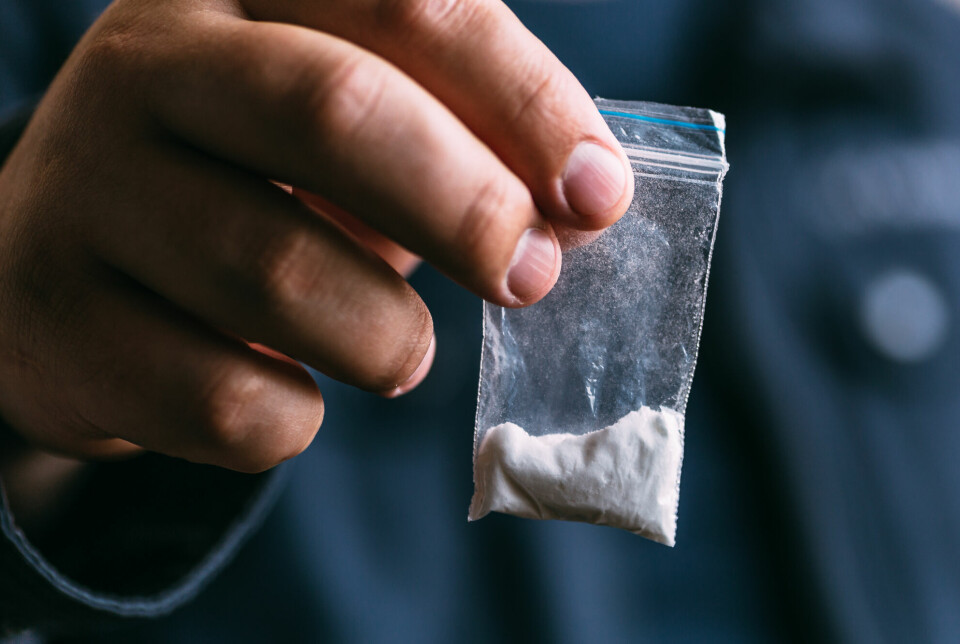
Researchers warn healthcare professionals: Increased cocaine use can lead to more heart disease
In 2023, the use of cocaine increased in Norway. Two addiction researchers now believe that healthcare personnel should be aware of the consequences.
There are two dangers they are particularly concerned about.
The risk of addiction is significant. Additionally, there is a high risk of developing cardiovascular diseases from using cocaine. This is shown by the latest research that Jørgen G. Bramness and Marit Edland-Gryt write about in an op-ed in the Journal of the Norwegian Medical Association (link in Norwegian).
Effects on the cardiovascular system can be both acute and occur after long-term use, the two addiction researchers at the Norwegian Institute of Public Health write.
Using the substance immediately leads to an elevated heart rate, increased blood pressure, and disturbances in heart rhythm.
After prolonged use, the consequences for the heart can be more fatal. Research shows that cocaine can cause both heart attacks and plaque formation in the blood vessels.
Record-breaking seizures
Much indicates that the substance became much more common in Norway in 2023.
This year witnessed some of the largest drug seizures in Norwegian history, according to figures from the National Criminal Investigation Service.
There were also unprecedentedly large cocaine seizures throughout Europe last year.
The European Monitoring Centre for Drugs and Drug Addiction reported in 2023 that cocaine is now the second most common illegal drug in Europe.
Threefold increase among youth in Norway’s capital
Researchers know little about how much the use of cocaine has increased in the Norwegian population in the past year.
The Norwegian Institute of Public Health has figures from 2022. They showed an increase in cocaine use of 4.7 per cent. This is higher than the average for the previous nine years, which was 2.4 per cent.
In 2023, eight per cent of upper secondary school students in Oslo said they had used cocaine in the past year, according to the Young in Oslo survey. That’s almost three times as many as in 2018, according to an article on forskning.no (link in Norwegian).
Boys in the final year of upper secondary school use the most, according to the survey. 17 per cent report that they have used cocaine in the last year.
More control when drinking
Cocaine use is often associated with money and luxury. But a study by Marit Edland-Gryt paints a slightly different picture.
Many use cocaine to have more control when they drink alcohol, she tells the Norwegian Broadcasting Corporation NRK.
“They say they can go out, drink heavily, and then use a bit of cocaine, which makes them feel more alert and sober, allowing them to drink even more,” she says.
But research shows that cocaine and alcohol are a dangerous combination. Together, these substances become much more harmful than they are alone.
When cocaine is taken with alcohol, the substance cocaethylene is formed in the liver. This increases the likelihood of heart attacks and strokes.
Cocaine use may be overlooked
In their recent op-ed, Bramness and Edland-Gryt highlight that cocaine abuse often goes unnoticed in the healthcare system.
They therefore argue that this must receive more attention.
They suggest that healthcare professionals should consider the possibility of cocaine use in patients presenting with acute, unexplained illnesses or cases of poisoning.
Probably underreported
Lilliana Bachs, assistant department head of forensic sciences at Oslo University Hospital, tells TV2 that the consequences of using cocaine are probably underreported (link in Norwegian).
‘When you're hospitalised for a heart attack, admitting to cocaine use isn't usually the first thing patients do,’ Bachs says.
In the interview, she points out three particular dangers associated with cocaine.
Firstly, cocaine constricts the arteries, reducing blood flow to the mucous membrane, potentially leading to a hole in the nasal septum.
In addition, it increases blood pressure and heart rate, and narrows the blood vessels. In the worst case, this can have fatal consequences.
“It can result in heart attacks and strokes,” Bachs tells TV2.
———
Translated by Alette Bjordal Gjellesvik
Read the Norwegian version of this article on forskning.no





































